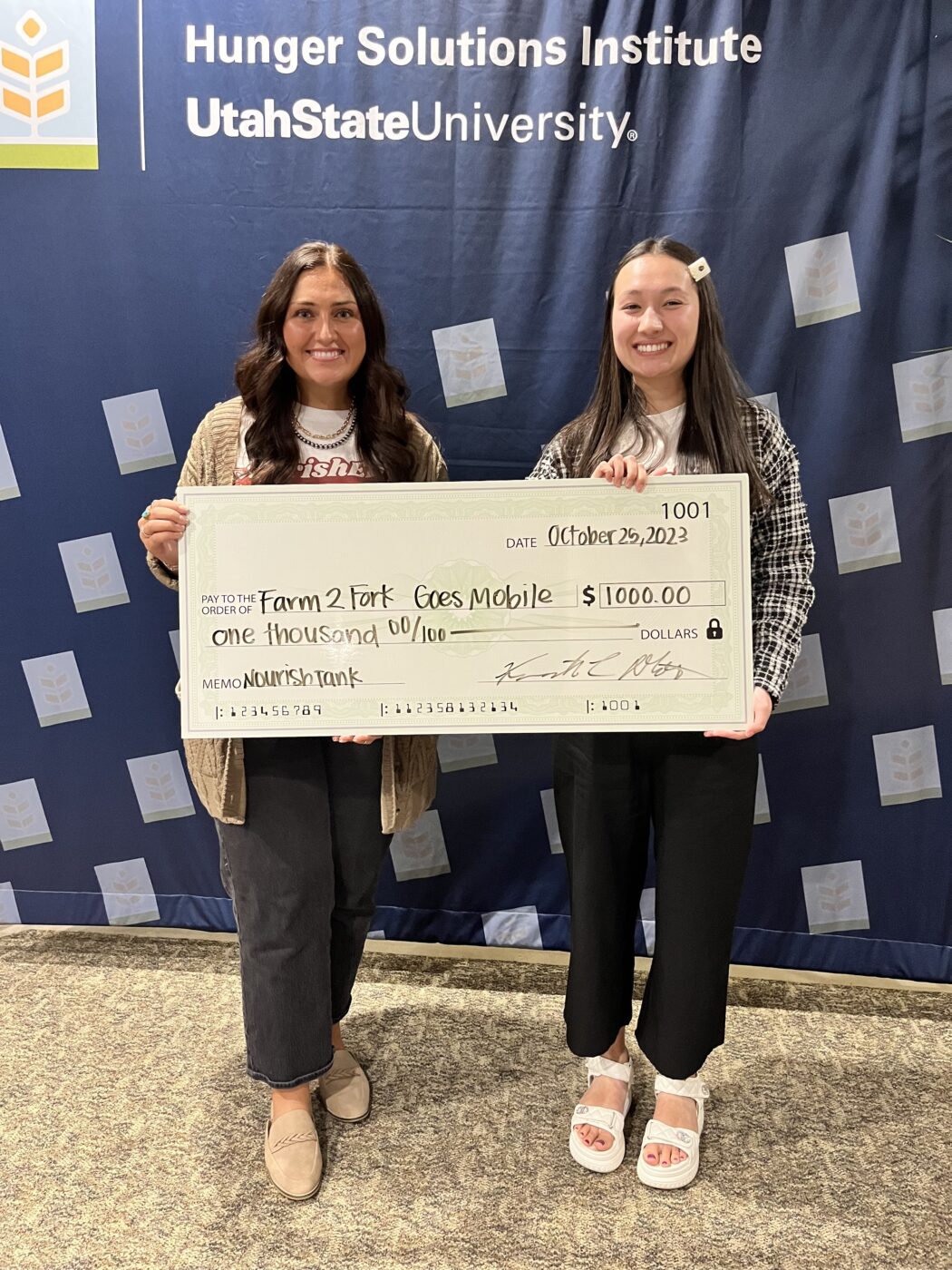Farm 2 Fork Goes Mobile; winners of the NourishTank competition
On Wednesday, Oct. 25, the NourishTank competition hosted by the USU Hunger Solutions Institute was completed. The winners were graduate students Saydee Longhurst, Macey Bunn and Lisa Hunsaker, with their proposal of Farm 2 Fork Goes Mobile.
The design of the NourishTank competition was based on the TV show Shark Tank, in which contestants provide innovative and sustainable solutions to help combat both hunger and food insecurity.
The two goals of Farm 2 Fork are to provide nutritional and fresh produce that students may lack, and to help provide said students with the tools needed to make good nutritional and dietary choices in the future.
Using trucks that will pick up donations of food produce from private citizens’ fruit trees and gardens, they will then in turn be taken to elementary schools. Students there will be taught recipes that include the fruits and vegetables donated, which will be paired with a small nutritional lesson; students will be sent home with both the recipe and some of the produce given.
Many of these recipes and produce are seasonal, due to the nature of them being collected via donations from private gardens. For example, one of the recipes was sauteed butternut squash, due to an excess of squash in the fall months. This helps make the food items more accessible.
Planning has begun to discuss food preservation, as fresh produce tends to be much harder to access cheaply during the winter months. This includes methods such as canning, drying and freezing food items; these are good ways to preserve food and maintain high degrees of nutritional value in said foods. Not to mention that good recipes can still be made with such preserved foods — for example, smoothies can be made with frozen fruits.
One of the often under-discussed parts about hunger that Farm 2 Fork addresses is that of transportation. Food deserts are areas in which most residents do not have easy access to affordable nutritious foods. Bunn said these issues occur in areas that lack good (or any) public transportation. This led to the idea of using trucks, so that the aforementioned nutritious foods can be taken to such areas. This results in people in food deserts being able to worry less about where to find nutritious food.
Another key issue addressed by the program is food waste. Bunn said many people who own fruit trees and personal gardens would frequently eat what they can, and then leave any remaining produce to rot. This led to the idea of collecting said food items with the trucks, to then be used in all the aforementioned programs, both reducing food waste and providing nutritious food to food insecure families.
Lisa Hunsaker hopes this program will help bring the community together.
“We have a group that we’re trying to help with food insecurity but yet also helps bring the community together,” Hunsaker said.
Both Macey and Lisa note that there are still details that need to be worked out. This is why the program is expected to start within the next two years, though there is hope it will be sooner.
The program will start in the Provo City School District, but they hope this program can expand to the rest of Utah.
Provo was chosen due to a large proportion of food insecure students. “Fifty-eight percent of the students there suffer from food insecurities,” Hunsaker said.
The choice to focus on schools, specifically elementary schools, was very intentional — Bunn said people tend to develop both eating habits and food preferences around this time. Therefore, by starting younger, this can help avert kids from having a preference towards foods that might be higher in calories or have high sugar contents.
The earliest these trucks will begin driving around and asking for donations might be summer of 2024, with the latest being within two years, though both Hunsaker and Macey stated that they hope for it to begin rolling out sooner rather than later.

